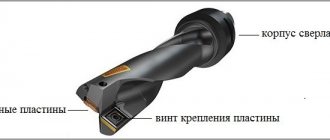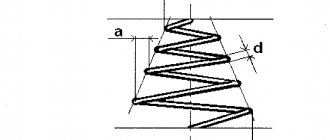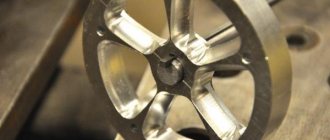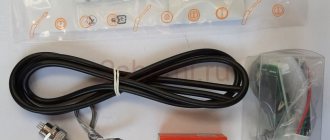A working stove in the car is very good, especially if it’s winter outside. After all, driving a car when it’s cold inside is very inconvenient and sometimes dangerous. But often ordinary standard stoves require large amounts of electrical energy and fuel to operate effectively. To reduce fuel consumption, car owners began to use a 12-volt diesel autonomous interior heater. These devices have a number of serious advantages over standard stoves. One of the advantages is saving battery power and fuel.
What is this device
Autonomous heaters are units designed to heat the air in the car interior or process fluids in the car when the engine is turned off. Depending on what the heater is supposed to heat, it is divided into several types:
- Air devices.
- Liquid.
- Oily.
The autonomous cabin air heater is designed to heat only cabin air.
The best models of heaters from the cigarette lighter
Below are the best heaters that operate from a cigarette lighter. All of them have proven themselves well among drivers and are suitable for almost any car.
Alca 544200
Alca 544200
Price: from 1,200 rubles.
Pros:
- Long lasting ceramic air heater.
- Built-in fuse protecting against overloads.
- Operates in heating and cooling modes.
- Warming up a large area.
Minuses:
Chinese assembly.
150 W fan heater for the interior from a 12 V cigarette lighter. The ceramic heater effectively heats the air, and the fan directs the flow to the appropriate place. The 1.4 m long power cable allows you to install the equipment even next to the rear window.
The power of the equipment is sufficient to heat an area of up to 5 square meters, which means providing comfort in a car of any size. At the same time, the air does not dry out, so there will be no inconvenience for the driver and passengers.
KOTO EFB 220 12V 901
KOTO EFB 220 12V 901
Price: from 1,300 rubles.
Pros:
- High power.
- Possibility of working in two modes.
- Interesting appearance.
- High quality build.
- Convenience of placement.
Minuses:
The installed protection system does not always work correctly.
Electric heater from a well-known company producing heating equipment for cars. It has a ceramic heating element that heats the air without drying it out. The model is capable of functioning in two modes: as a regular fan or as a fan heater.
Due to the convenient rotating base, you can install the device in any convenient place and adjust the direction of the warm air flow according to your preferences. The power of 200 W is enough to defrost frozen windows, as well as for general heating of the interior.
Heat current v12
Heat current v12
Price: from 1,250 rubles.
Pros:
- Convenient installation on the dashboard.
- Operates in heater or fan mode.
- Folding handle.
- Possibility to regulate air flow.
Minuses:
- The housing is sensitive to damage.
- Low power.
A multifunctional device that allows you to simultaneously blow air onto passengers and the windshield. A convenient stand helps regulate the air flow by tilting the structure in one direction or another by 45 degrees.
The folding handle will provide the necessary comfort when heating icy windows and defrosting specific elements. The model operates much faster than a standard stove, without causing fogging of windows during operation. A power of 150 Watts does not allow heating large areas effectively.
AUTOVIRAZH AV161007
AUTOVIRAZH AV161007
Price: from 1,000 rubles.
Pros:
- Multifunctionality.
- The presence of a folding handle.
- Built-in fuse.
Minuses:
Assembly in China may not be of very high quality.
Car ceramic interior heater that can be used both in winter and summer. The 3 in 1 system can be used as a heater, cooling fan or hair dryer.
In the latter case, the folding handle is especially useful, allowing you to comfortably hold the structure while heating the elements of the car. The case is made of durable plastic and copes well with all loads and practically does not change its properties under regular temperature exposure. The device weighs only 0.45 kg and is mounted on a swivel stand.
Autolux HBA 18
Autolux HBA 18
Price: from 6,900 rubles.
Pros:
- Great power.
- Advanced system for adjusting the direction of airflow.
- Long cable for connection.
- Versatility.
Minuses:
Price.
Powerful car interior heater, suitable even for large trucks. The ceramic heating element transfers temperature well to the air and does not dry it out. In addition to the standard connection via the cigarette lighter, it is also possible to provide power directly from the battery.
The 300 W device allows you to quickly warm up the car windows, as well as create the necessary conditions for the driver and passengers. When installing, it is worth considering the weight of the equipment, which here is 1.5 kg.
Gas heater
This group of equipment operates on liquefied gas. Due to its combustion, a special fan is activated. The latter ensures natural air circulation processes in the cabin. The air is heated to certain temperatures. To make this process faster, many devices have additional fans.
These devices can operate even if the engine is turned off. The device also does not require electrical energy, which cannot be said about a standard stove. So, even if you need to stand in one place for a long time, the battery will not run out, and the driver will not freeze.
Autonomous interior heater "Planar"
The operation of this device is based on an elementary principle. It draws atmospheric masses into the middle of the heating compartment. When fuel burns, heat is released, which then enters the cabin.
The main positive aspect of this device is the ability to adjust the heating power. This process is ensured thanks to a special control knob located on the regulator. It features original design and smooth operation.
The specified power indicator is maintained automatically. When the critical temperature is reached, the unit simply turns off. Increased heat inside the cabin reduces power and warm air supply.
The principle of operation of an autonomous stove
It doesn’t matter what fuel this or that device runs on, because the principle of operation of the heaters is the same. The fuel, which is supplied using an electromagnetic pump, which is embedded in the line near the fuel tank, is supplied in certain doses to the combustion chamber - to a special evaporator.
The latter can be a body resistant to high temperatures with a large surface area. In some models this is a stainless steel mesh package. If we consider a 12-volt diesel “Planar” autonomous interior heater, then a plate heat exchanger is used as an evaporator.
When the driver turns on the 12-volt diesel Planar (or any other) autonomous cabin heater, the electronics perform diagnostics and start up. The voltage at the glow plug increases. Next, the fuel mixture is supplied to the chamber. The combustion process is controlled by electronics and sensors. When combustion becomes stable, the glow plug will turn off.
Homemade car interior heater
Anyone who has driven a budget car knows how long it takes to wait for heat from the engine when it warms up in winter, especially if you live in the northern part of the country. Attempts to warm up in a car in a minute last for half an hour, and this happens every morning. It is useless to try to warm up a cold steering wheel and a frozen seat with your body heat.
In extreme conditions, ideas for a quick solution to the problem come to mind. The best idea was this: heat the car interior with a quickly assembled fan heater. An old toaster and a broken computer power supply helped us practically realize our plans. Although you can also take the necessary parts from a broken hair dryer. But you definitely need an iron box with a fan.
From this point on, many of the readers will ask themselves: “Why do I need to assemble a heater in my car if I can just buy it at a car dealership?” Also, regarding a homemade heating device, you can say: “This thing is a fire hazard, especially in a car.” If the mentioned comments are serious reasons for you, then you may not read any further.
Store-bought car heaters, which can be bought at car dealerships, are only suitable for blowing off fogged windows. A homemade heater can be assembled with as many watts as your car battery can handle.
Now that all the cowards are gone, we can start putting together our homemade product. But first, let's put on the table all the things and materials that we need.
- Suitable heating elements from a toaster or hair dryer.
- A metal box with a fan and a built-in switch from the computer power supply.
- Two radiators with splayed heat sinks, from the computer power supply.
- Electromechanical relay 12 V, 30 A.
- 30 Amp fuse in housing.
- Steel springs.
- Wires with a cross section of 1.5 mm2.
- Two plastic bushings.
We will start with assembling the heating element, since this is the most important and powerful part of our homemade product.
To begin, you need to screw one radiator directly to the cover of the computer's power supply, closer to the place where the fan is located. Fix the second heat exchanger on the opposite side of the cover, but make sure that it is insulated from the metal, so fix it on insulating plastic bushings.
To finally assemble the heating element, all that remains is to do the following:
- wrap one end of the straightened nichrome wire around the protruding pins of the radiator, which is electrically connected to the cover of the computer power supply;
- screw the other ends of the nichrome wire onto the spring rings, and the opposite rings of these springs must be hooked onto the pins of the insulated radiator.
After reviewing the attached diagram, you will most likely have questions.
The first of them will be: “Is it necessary to install an electromechanical relay?” Of course not necessary! But then you need to find not even a switch, but a real 30 A switch. But for most modern people, it is still more convenient to turn on any electrical appliances with a small switch. For this we use a small standard keyboard player installed in the computer power supply.
A few words about connecting the fan. It was noticed that when the cooler in the computer power supply runs on 12 V, its speed is not enough to fully circulate air through the homemade heater. And as a result, the insides of the heater overheat. Although, of course, many additional holes were made in the opposite wall of the power supply housing.
Connected to a 24 V voltage, the fan in the computer power supply does not burn out at all, but simply rotates much faster. Therefore, it is advisable to power the fan of a homemade car heater from a voltage twice as high as 12 V.
Where can I get 24 V voltage in a car? And this is not a problem if you are a real craftsman and can solder and also read electrical circuits. A reliable source of overvoltage will be a DC-DC converter from 12 V to 24 V.
The assembled heater must be connected directly to the battery, or through the cigarette lighter socket. You should also know that the 30 A fuse should not be installed inside the heater housing, but separately, and as close to the battery as possible. It is best to connect the fuse directly to the battery terminal, and lay a separate power supply for the heater in order to maximally protect the car's electrical wiring from current overload.
That's all, get satisfaction and warmth from a self-assembled car heater, and do not forget to monitor the battery charge level, and the most convenient way to do this is through the battery charge indicator . You can also make a heated steering wheel for your car.
Good luck on the roads.
Connect devices whose actions and properties are little known to you, especially homemade ones, using fuses.
How to install a heater
The installation process is a simple operation. It is necessary to find a place for the device, connect the system to the fuel line, then make pipelines for air intake and exhaust gases. The latter will go outside. Then all that remains is to connect the electronics and electrical wires.
It is possible to install an autonomous interior heater yourself. To do this, you do not need to contact specialists. However, there will be no guarantee for installation either.
How to make a car heater with your own hands and power it from the cigarette lighter: instructions
The operating principle of fan heaters is based on the formation of a heat flow by blowing a heated body. The air flow is generated by a fan, and a ceramic heating element acts as a heat source. Previously, there were models with tubular electric heaters and nichrome spirals.
Selection of components
You can create additional heating for the car interior in winter using improvised means. One of the simple schemes includes components available to any inventor:
- IP65 electrical junction box which serves as housing.
- Nichrome spiral for a household electric oven, acting as a heating element.
- Two axial fans.
- Two terminal blocks for fastening sections of spirals and tying them with connecting wires.
- Wire with a cross-section of at least 2.5 mm2.
- Cigarette lighter connector.
- Switch button.
Spiral
When choosing a ferronichrome spiral element, you must be guided by its cross-section. It is not recommended to choose products with a diameter of more than 0.6 mm. The optimal diametrical characteristic is 0.6 mm - and can be easily found on sale, and the connection diagram is simple. We will adhere to this advice when designing the electrical part.
Cooler
Small fans can handle the heat dissipation function. The specific size depends on the dimensions of the junction box. For example, for a box 88x88x60, two coolers 30x30x15 are suitable. Of course, the electric motor must be designed for 12 Volts.
Manufacturing
When creating a heater circuit for a car with your own hands, powered from a cigarette lighter, it is important to understand that its electrical resistance depends on the length of the section of the nichrome spiral, which affects the amount of current consumed and, as a result, the amount of heat emitted. The larger the length and cross-section, the lower the resistance of the conductor and the greater the power of the installation. It is important not to overestimate the scheme here.
The standard cigarette lighter power circuit is designed for no more than 15-20 Ampere load
It is important not to overestimate the scheme here. The standard cigarette lighter power circuit is designed for no more than 15-20 Ampere load. Based on this, we construct a scheme, taking into account the following aspects:
Based on this, we construct a scheme, taking into account the following aspects:
- Number of spirals – 5.
- The length of the spiral element is 20 cm, diameter is 0.6 mm.
- Two sections are powered in parallel: one consists of two series-connected spirals, the other – of three. The first is located closer to the fans.
Installation of spiral elements is carried out in “terminal blocks”, the connection to each other is also made through the holes of the terminal clamps with pieces of wire.
At one of the ends of the distribution box, a cutout is made for the fans, which are glued together and glued to the body. On the opposite side there is a window through which air will escape from the product. You can use a drawing as a visual aid. In fact, the power of the device is about 150 W. Current consumption is 13 A. A more powerful device involves the use of spirals with a diameter of 0.8 or 1.0 mm of a similar length. Connecting such installations to the cigarette lighter socket is impossible - the product is connected directly from the battery through a 30A fuse and relay.











